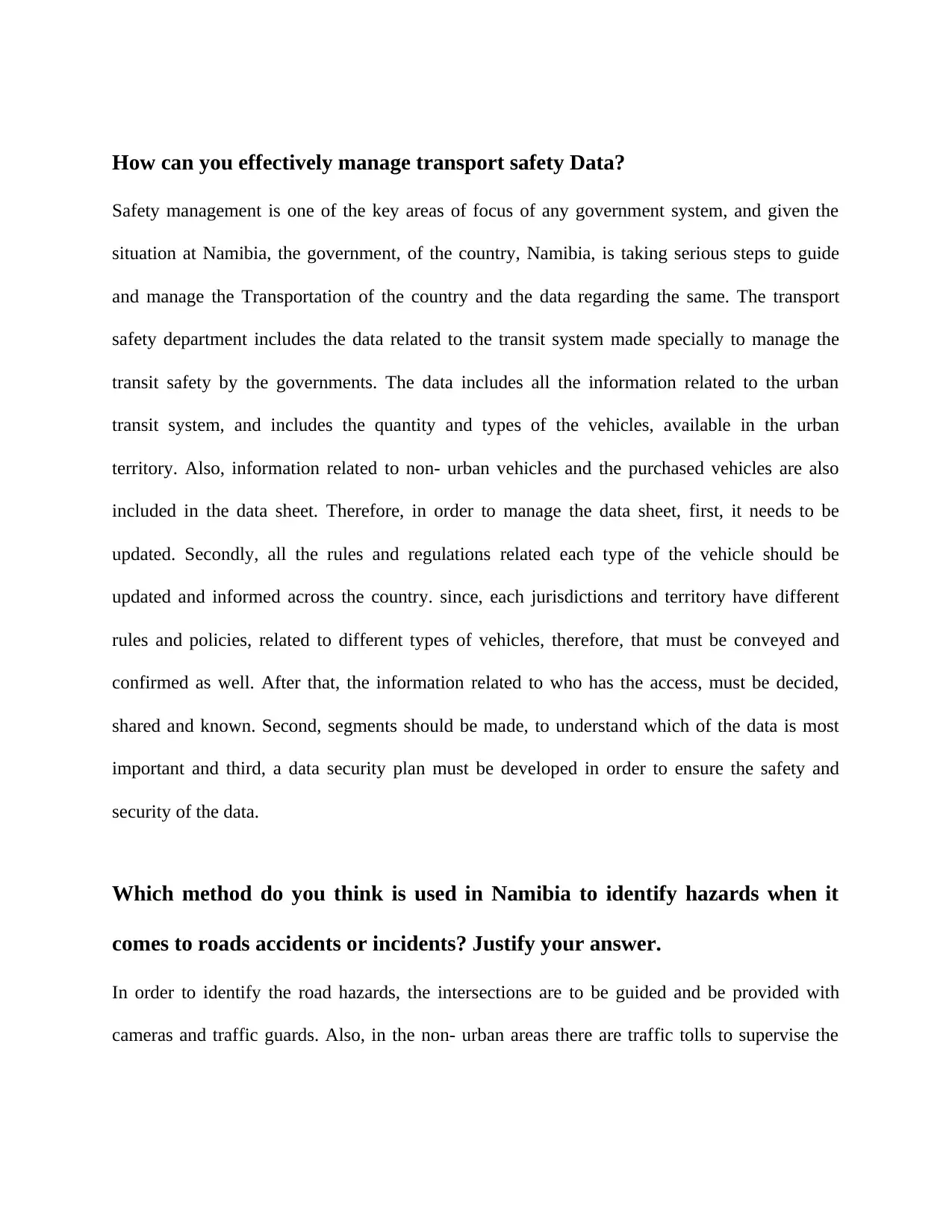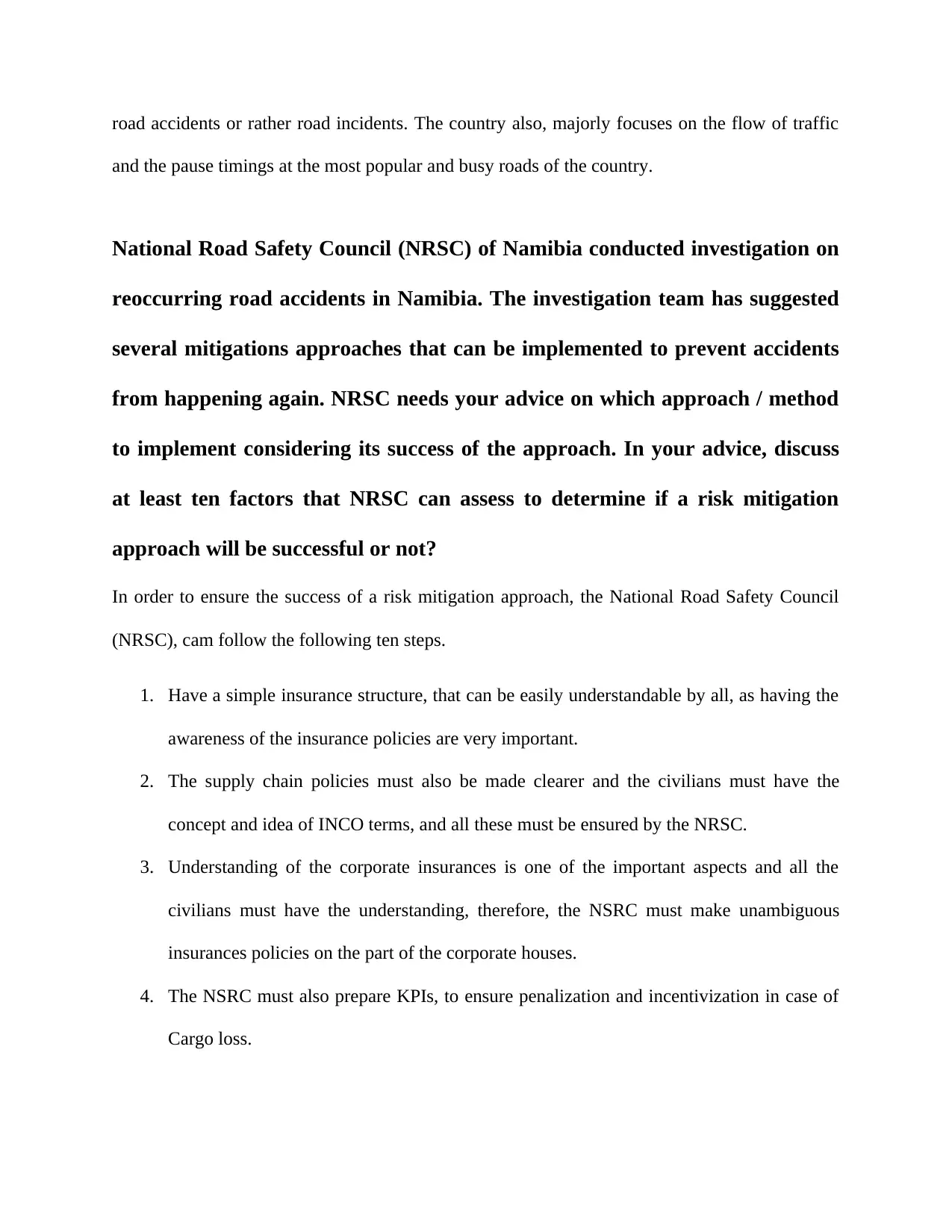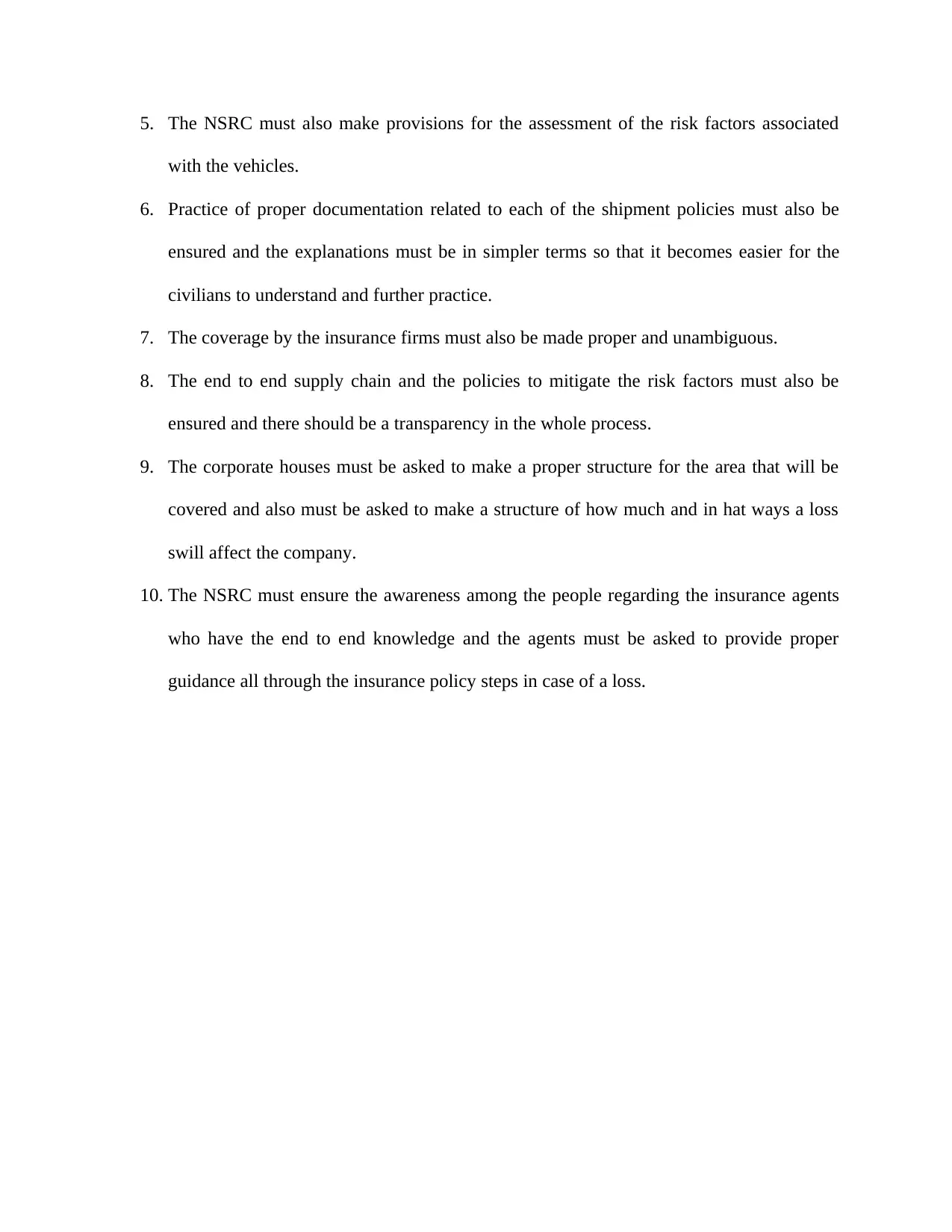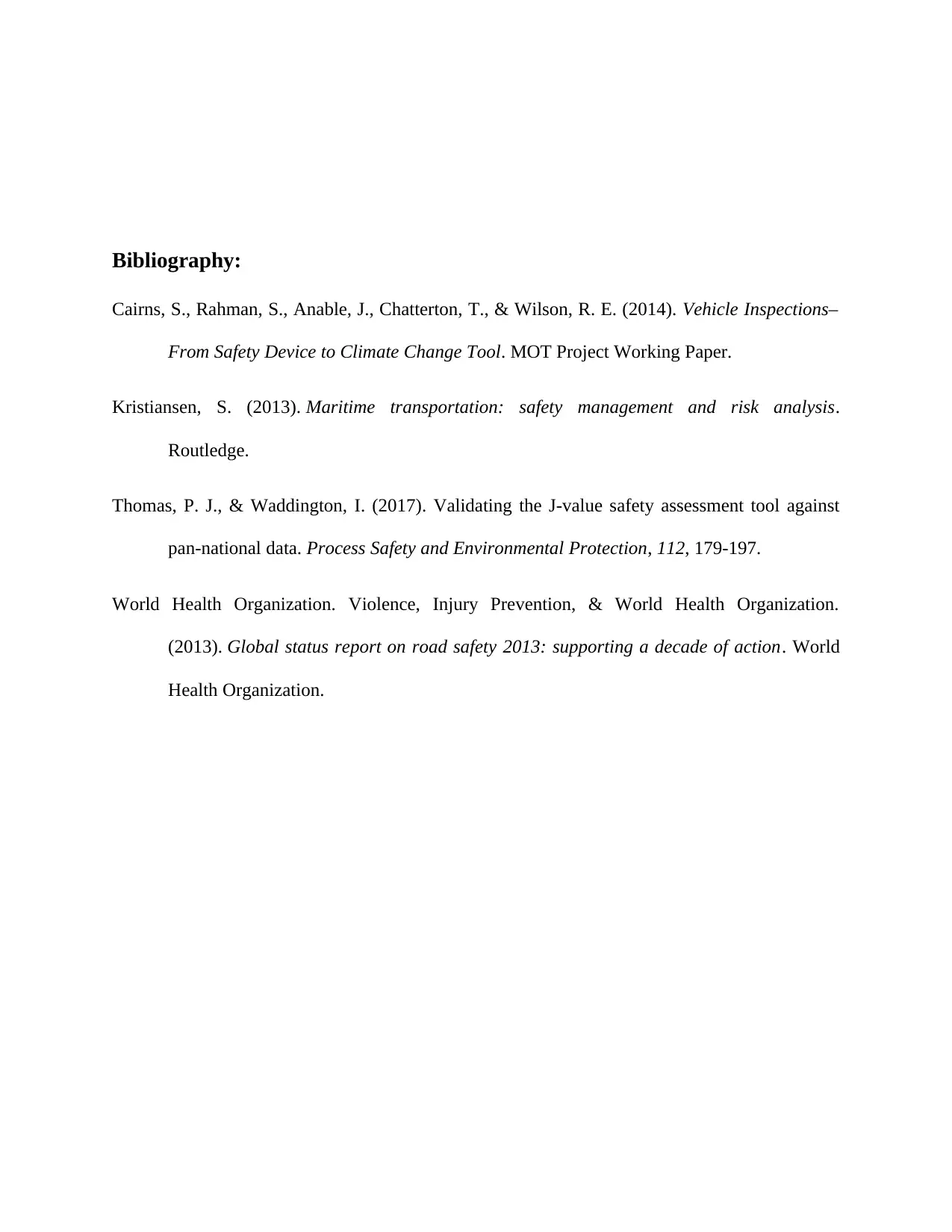Analyzing and Managing Transport Safety Data: A Namibian Case Study
VerifiedAdded on 2022/10/11
|4
|887
|411
Report
AI Summary
This report examines the effective management of transport safety data, focusing on the context of Namibia. It discusses the importance of updating and securing transport-related data, including vehicle information, regulations, and access control. The report then analyzes the methods used in Namibia for identifying road hazards, such as the use of cameras, traffic guards, and traffic flow management. Furthermore, it addresses the National Road Safety Council (NRSC) of Namibia's need for advice on risk mitigation approaches. The report suggests ten factors that NRSC can assess to determine the success of a risk mitigation approach, including insurance structure clarity, supply chain policies, corporate insurance understanding, key performance indicators (KPIs) for cargo loss, vehicle risk assessment, documentation practices, insurance coverage, end-to-end supply chain transparency, corporate structure for loss assessment, and awareness of knowledgeable insurance agents. The report concludes with a bibliography of relevant sources.
1 out of 4







![[object Object]](/_next/static/media/star-bottom.7253800d.svg)